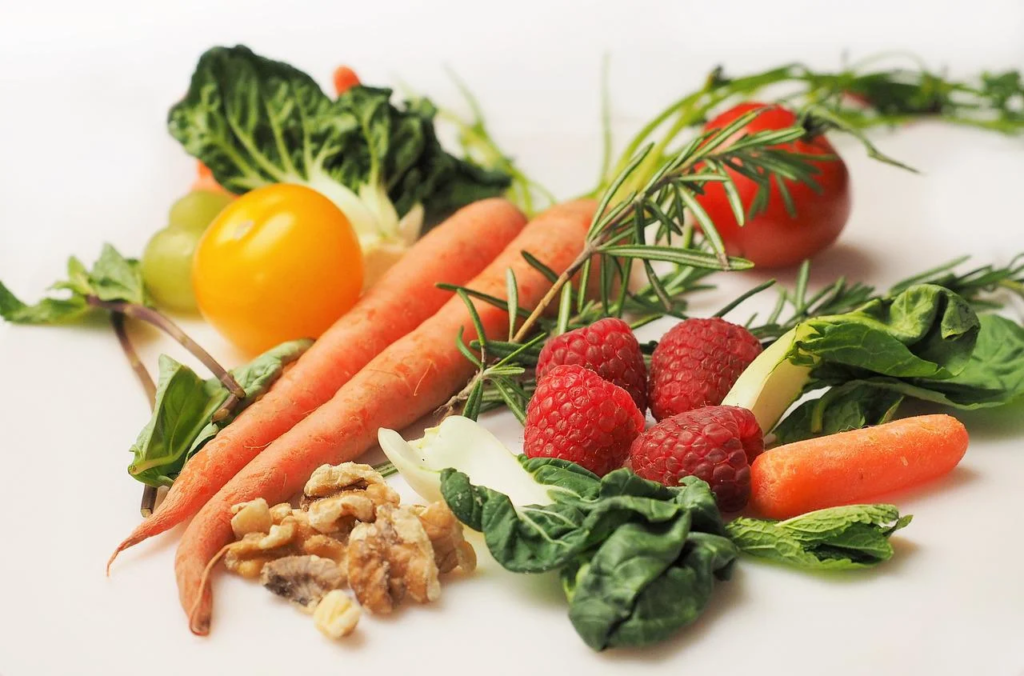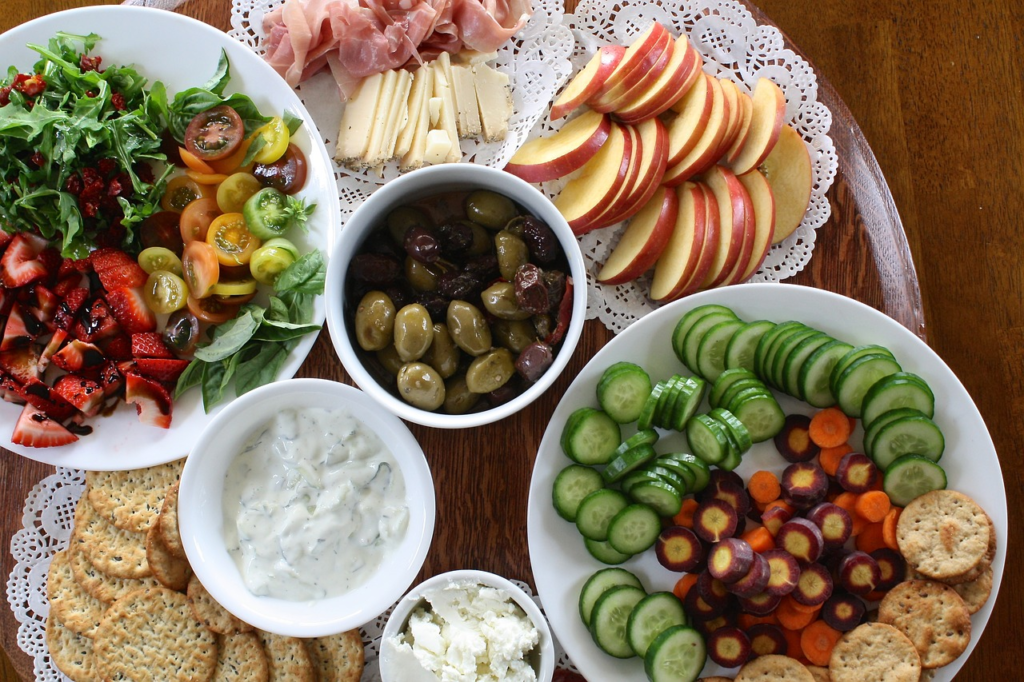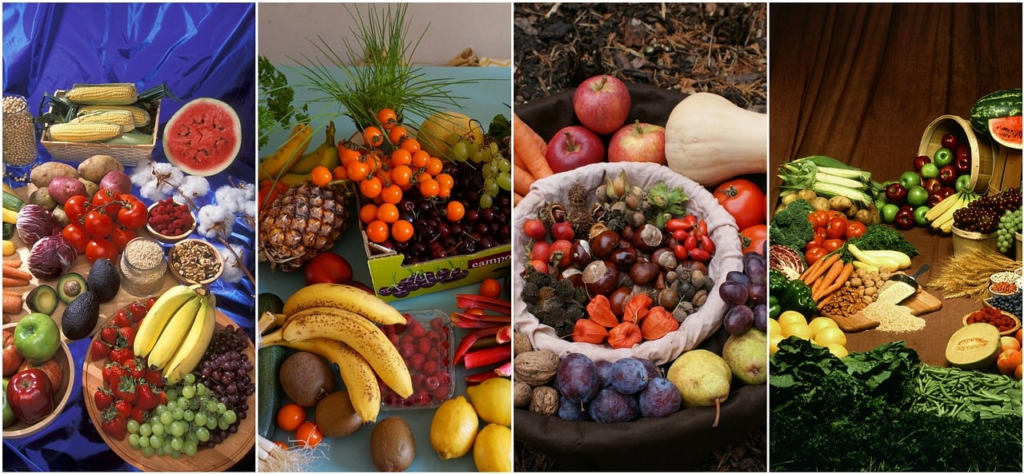Vegetables and fruits are rich in vitamins and minerals, but the substances that receive more attention are phytochemicals. Phytochemicals are protective substances that plants produce to protect themselves, and when they enter the human body, they have a powerful antioxidant effect. Anthocyanin, lycopene, beta-carotene, etc. are all phytochemicals and are mainly contained in pigments. Therefore, to consume a variety of phytochemicals, you must eat a variety of colored foods.
< Index >
The importance of vegetables and fruits

The Korean Society of Nutrition recommends that adults eat 490g of vegetables and 300g of fruit per day. However, people in our country only eat about 300g of vegetables and 200g of fruit a day. Unless you have a specific disease such as diabetes or obesity that requires you to be careful about carbohydrates, the more fresh vegetables and fruits you eat, the better. Especially women who have entered menopause should consume more than the recommended amount.
Research has shown that if postmenopausal women consume more than the recommended amount, the risk of metabolic syndrome is reduced by nearly 40%. If you are not sure how much you should eat at each meal, it is recommended to eat at a ratio of 1 part rice, 2 parts vegetables, and 2 parts protein food.
If you know that vegetables and fruits are good for you, but there are so many different types and you don’t know what to eat, the selection criteria is simple. Just eat vegetables and fruits of as many different colors as possible. To put it simply, eat one green, red, orange, white, and purple vegetable rather than five green vegetables. By eating vegetables and fruits of various colors, you can effectively consume different nutrients.
Vegetables and fruits are rich in vitamins and minerals, but the substances that receive more attention are phytochemicals. Phytochemicals are protective substances that plants produce to protect themselves, and when they enter the human body, they have a powerful antioxidant effect. Anthocyanin, lycopene, beta-carotene, etc. are all phytochemicals and are mainly contained in pigments. Therefore, to consume a variety of phytochemicals, you must eat a variety of colored foods.
Recipes to Preserve Nutrients

When choosing vegetables or fruits, it is best to choose brightly colored ones and eat them with the skin, which is rich in pigment. According to data from the National Health and Nutrition Examination Survey, 32.9% of the vegetables eaten by Koreans are white, followed by yellow, orange, purple, and green. Red had the least at 7.4%. So, try to eat more red vegetables and fruits such as tomatoes, watermelon, and red bell peppers.
When cooking vegetables and fruits, it is recommended to use recipes that suit each characteristic. Phytochemicals, which are abundant in white vegetables, are resistant to heat and are better absorbed when eaten with oil. Red vegetables and fruits are rich in vitamins and minerals, but these nutrients are sensitive to heat, so it is best to eat them raw. However, tomatoes lose almost no nutrients when cooked, and actually contain many components whose content increases when cooked. The nutrients in green vegetables are weak to heat, so eat them raw if possible, but if it is uncomfortable to eat, it is better to lightly boil them.
Purple vegetables are particularly sensitive to water, so eat them raw or steamed in a steamer. Orange and yellow vegetables have a lot of fat-soluble ingredients, so it is better to fry them in oil. But that doesn’t mean you have to cook it only one way. This is because even if some components decrease, others may increase. In other words, you can eat a variety of vegetables in a variety of ways without having to think too complicatedly.
Benefits of vegetable and fruit juice

The Korean Society of Nutrition’s daily recommendation is 7 servings of vegetables and 2-3 servings of fruit. This means you have to eat 10 plates every day. So, juice is convenient because you can easily consume large amounts of it. There are two ways to make juice. Should you use a juicer or a blender? Pressed juice generates less frictional heat, resulting in less destruction of nutrients, and the insoluble dietary fiber that cannot be digested is separated into waste, resulting in a higher nutrient absorption rate.
On the other hand, because the mixer grinds the whole food, it is rich in dietary fiber, which is good for intestinal health and makes you feel fuller. However, because it is high in dietary fiber, the absorption rate is low. Therefore, if nutrient intake is most important, you can juice it. If diet is more important, you can drink it ground. However, regardless of whether it is salted or ground, it is recommended to drink it within 15 minutes of making it and not to wait more than 12 hours.
Fruits, like vegetables, provide many nutrients to our bodies. It is important to eat a variety of fruits. Fruits are rich in vitamin C, potassium, and dietary fiber, and help strengthen immunity and prevent disease through their antioxidant properties. When choosing fruits, it is best to choose fruits that are ripe. Ripe fruits have maximum flavor and nutrients. The peel of the fruit is rich in dietary fiber and various nutrients, so it is recommended to consume the peel as well.
The summary is as follows.
- Vegetables and fruits need to provide our bodies with a lot of nutrients.
- It is recommended to eat vegetables and fruits in various colors.
- A substance called phytochemical is abundant in vegetables and fruits.
- It’s best to eat fruits fresh.
- The fruit should be cooked in a simple way to minimize the loss of nutrients.
A good article to read together!
📌Attack of sodium :: a symptom of eating a lot of salty food
📌Four effects of arginine intake
📌How to eat more fruit and veg
